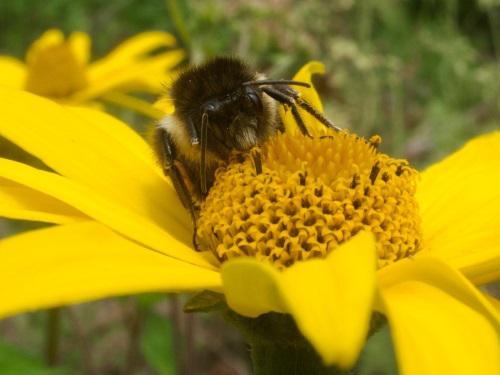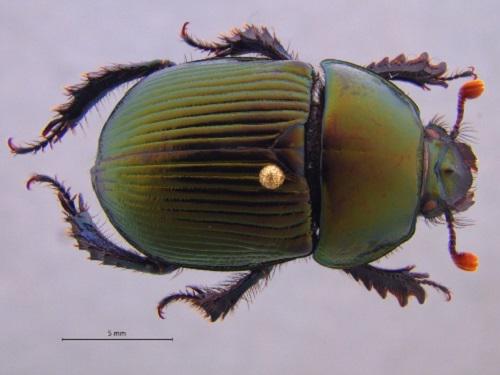Brenda Johana Cruz García
Mountains are particularly important ecosystems, easily affected by natural disasters, deforestation and climate change; therefore, their flora and fauna are highly threatened.
In México, the state of Oaxaca possesses high biodiversity and endemism. Bumblebees and dung beetles are both key for ecosystem integrity and can be use as bioindicators, but for the mountain regions there is a lack of information about their richness, abundance and distribution. Recently, bumblebee populations have decline and several new species of dung beetles have been described in the Oaxacan mountainous rages.
Derived from the above, monitoring of these communities at spatial and temporal scales have been proposed. Using species distribution modelling (SDM), the main objective of this work is to analyse the current and potential distribution of high mountain bumblebees and dung beetles under the climate change.

Bombus ephippiatus from the Sierra Sur. © Paola Venegas, 2017.
On the last decades, biodiversity conservation has become a priority due to the so-called environmental crisis. Climate change (CC) and anthropogenic activities are some of the main threats against the integrity of species communities.

Geotrupes nuntiatus, a new species of from the Mixteca.
In response to the environmental changes, monitoring the composition and structure of these communities at different temporal and spatial scales has been proposed as some of the adaptation and mitigation measures against climate change.
One of the most relevant tools for analysing the effect of CC on distribution patterns is, spatial distribution modelling (SDM), which through establishing the influence of environmental variables on the geographic distribution of species predicts their potential rearrangement. These predictions are useful to complement the current and future conservation plans.
Bumblebees and dung beetles are taxa with a wide wealth, endemism and highly sensitive to environmental changes, which is why they are used as bioindicators. The representation of the richness and abundance of these taxa in the high mountains mainly depends on elevation, as a result of the speciation processes and the history and the evolutionary origin of each specie. Therefore, their distribution is restricted, and they become more vulnerable to CC.
Mountainous ecosystems occur on 24% of the global territory providing home for at least 915 million people and multiple environmental services. Mountains sustain water, energy, food, and cultural and natural significance; threaten by land degradation, natural disasters and climate variations.
Given the above, this work has as its main objective to analyse the current and potential distribution of high mountain bumblebees and dung beetles under the effects of CC.